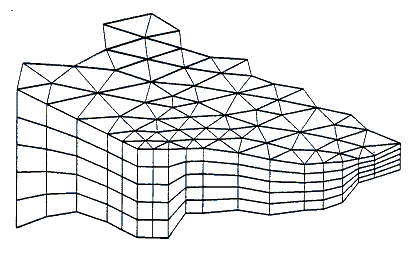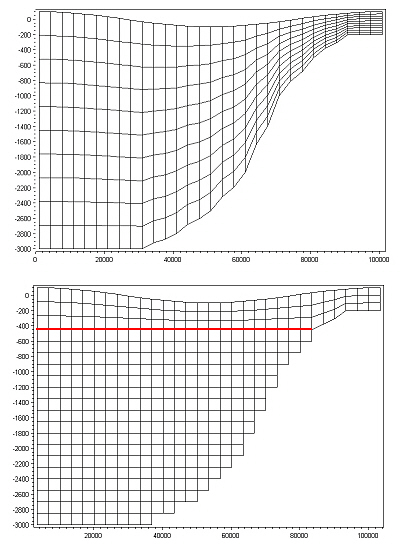
The MIKE 21/3 Coupled Model FM is based on flexible mesh approach. Providing MIKE 21/3 Coupled Model FM with a suitable mesh is essential for obtaining reliable results from your model. Setting up the mesh includes selection of the appropriate area to be modelled, adequate resolution of the bathymetry, wave, wind and flow fields under consideration and definition of codes for open and closed boundaries. Furthermore, the resolution in the geographical space must also be selected with respect to stability considerations.
In case 3D simulation is selected a layered mesh is used: In the horizontal domain an unstructured mesh is used while in the vertical domain a structured mesh is used (see Figure 5.1). The vertical mesh is based on either sigma-coordinates or combined sigma/z-level coordinates. For the hybrid sigma/z-level mesh sigma coordinates are used from the free surface to a specified depth and z-level coordinates are used below. The different types of vertical mesh are illustrated in Figure 5.2. The elements in the sigma domain and the z-level domain can be prisms or bricks (hexahedrals) whose horizontal faces are triangles and quadrilateral elements, respectively. The elements are perfectly vertical and all layers have identical topology.

Figure 5.1 3D mesh using sigma coordinates

Figure 5.2 Illustrations of the different vertical grids.
Upper: sigma mesh, Lower: combined sigma/z-level mesh with simple bathymetry adjustment. The red line shows the interface between the z-level domain and the sigma-level domain.
Mesh and bathymetry
Domain specification
Vertical mesh
Boundary names
Material and infrastructure